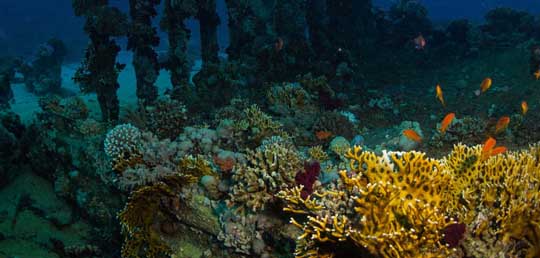Sharm EL Sheikh
Sharm El Sheikh is on a promontory overlooking the Straits of Tiran at the mouth of the Gulf of Aqaba. Its strategic importance led to its transformation from a fishing village into a major port and naval base for the Egyptian Navy. It was occupied by Israel during the Suez Crisis of 1956 and restored to Egypt in 1957. A United Nations peacekeeping force was subsequently stationed there until the 1967 Six-Day War when it was recaptured by Israel. Sharm El Sheikh remained under Israeli control until the Sinai peninsula was restored again to Egypt in 1982 after the Egypt–Israel Peace Treaty of 1979.[citation needed] A hierarchical planning approach was adopted for the Gulf of Aqaba, whereby their components were evaluated and subdivided into zones, cities and centers. In accordance with this approach, the Gulf of Aqaba zone was subdivided into four cities: Taba, Nuweiba, Dahab and Sharm El Sheikh. Sharm El Sheikh city has been subdivided into five homogeneous centers, namely Nabq, Ras Nusrani, Naama Bay, Umm Sid and Sharm El Maya. Sharm El Sheikh city, together with Naama Bay, Hay el Nour, Hadaba, Rowaysat, Montazah and Shark's Bay form a metropolitan area. Before 1967, Sharm El Sheikh was little more than an occasional base of operations for local fishermen; the nearest permanent settlement was in Nabk, north of Ras El Nasrani ("The Tiran Straits"). Commercial development of the area began when the Israelis built the town of Ofira, overlooking Sharm El Maya Bay and the Nesima area, and opened the first tourist-oriented establishments in the area 6km north at Naama Bay. These included a marina hotel on the southern side of the bay, a nature field school on the northern side, diving clubs, a now well-known promenade, and the Naama Bay Hotel.[citation needed] The site off the shore gun emplacements at Ras Nasrani opposite Tiran Island is now a diving area.[2][3][4] After Sinai was restored to Egypt in 1982, the Egyptian government embarked on an initiative to encourage the continued development of the city which is now an international tourist destination. Foreign investors – some of whom had discovered the potential of the locality during the Israeli occupation – contributed to a spate of building projects. Environmental zoning laws currently limit the height of buildings in Sharm El Sheikh so as to avoid obscuring the natural beauty of the surroundings. In 2005, the resort was hit by the Sharm El Sheikh terrorist attacks, which were perpetrated by an extremist Islamist organisation targeting Egypt's tourist industry. Eighty-eight people were killed, the majority of them Egyptians, and over 200 were wounded by the attack, making it the second deadliest terrorist attack in the country's history. The deadliest terrorist attack took place in Sinai when Militants detonated a bomb inside a crowded mosque in the Sinai Peninsula on Friday and then sprayed gunfire on panicked worshipers as they fled, killing at least 305 people and wounding at least 128 others.https://www.nytimes.com/2017/11/24/world/middleeast/mosque-attack-egypt.html The third deadliest was the Luxor massacre of 1997).[5]



